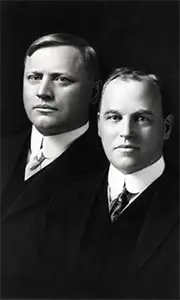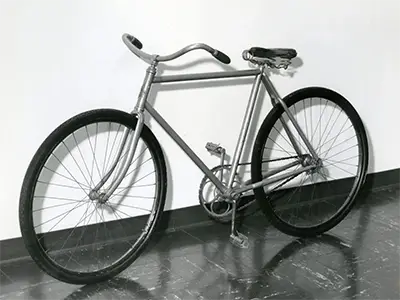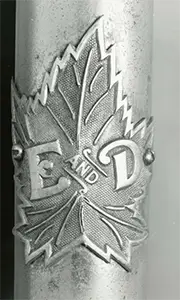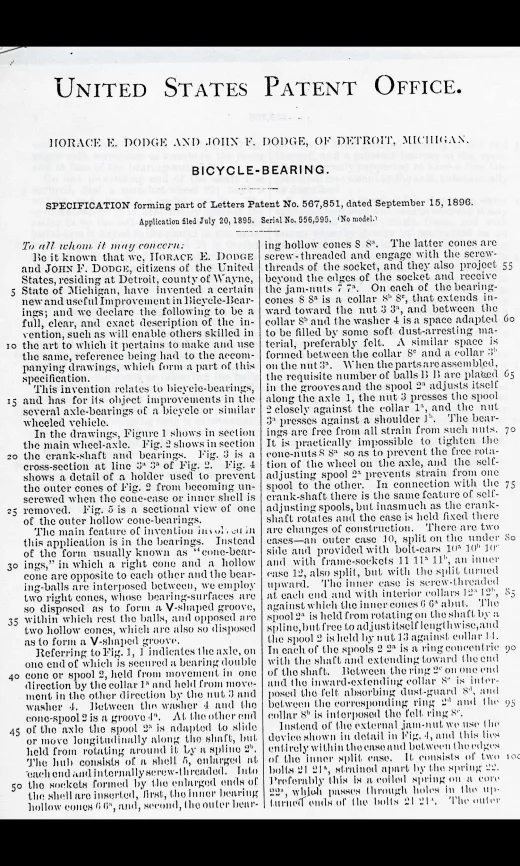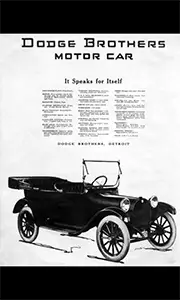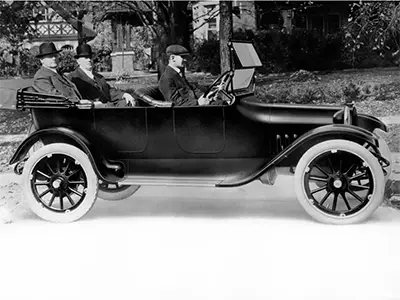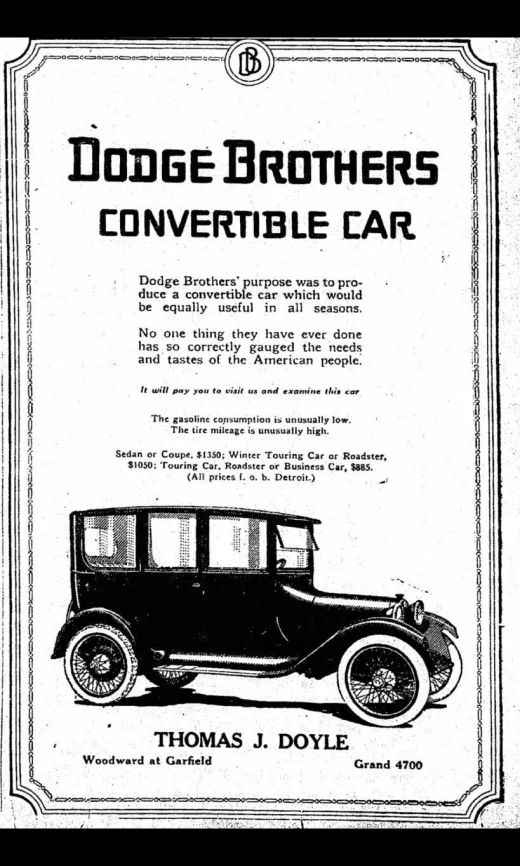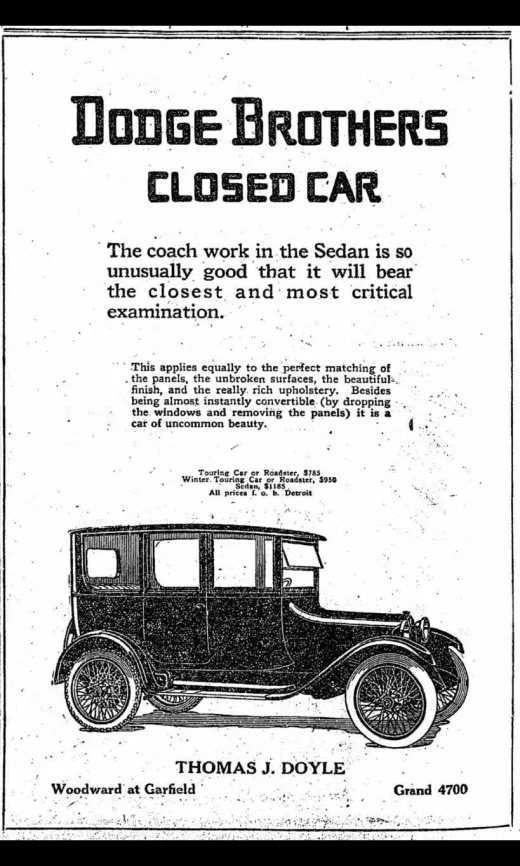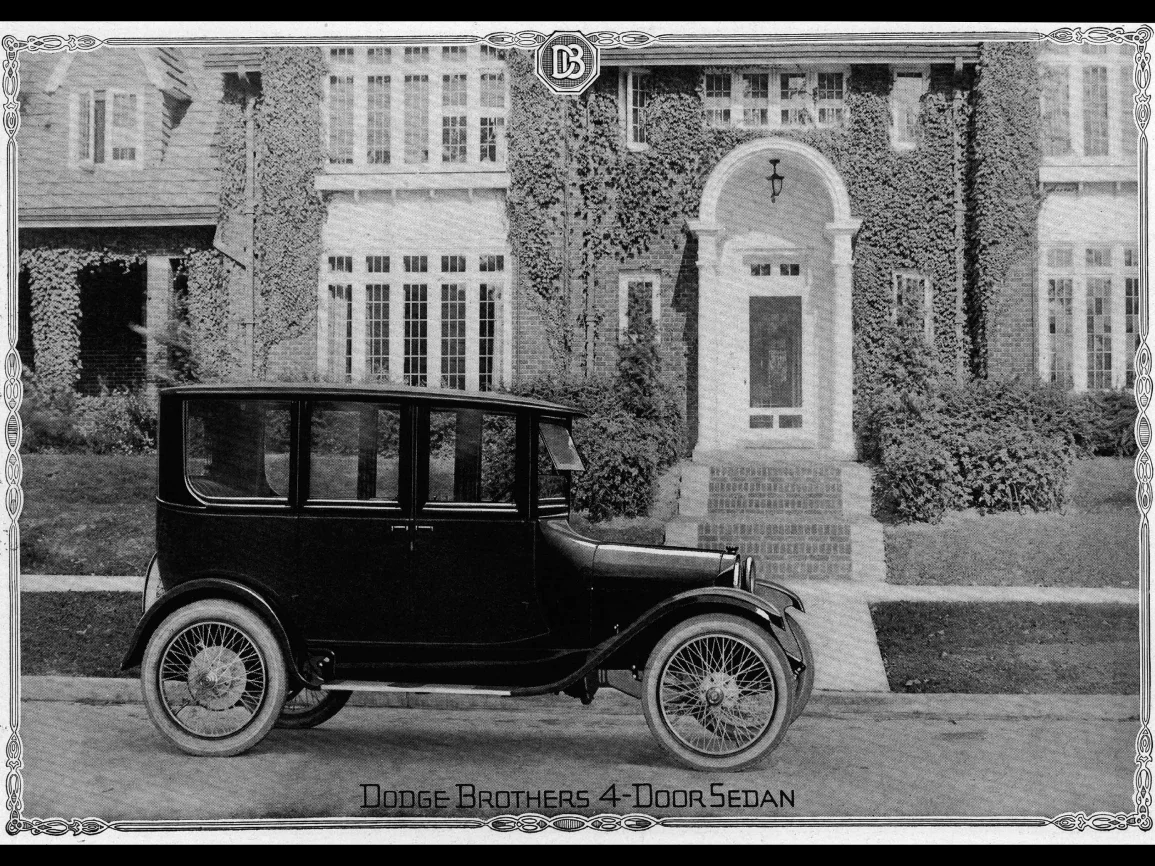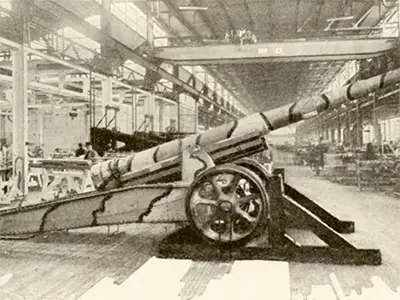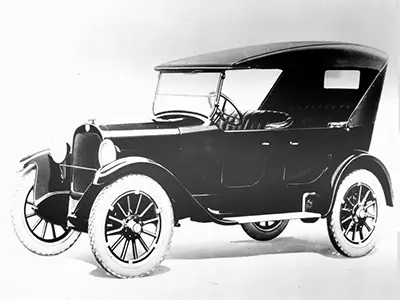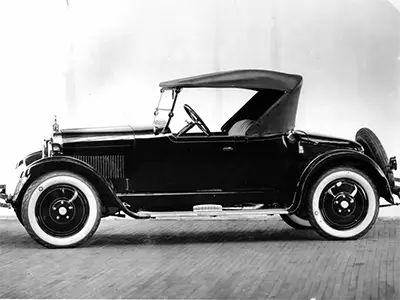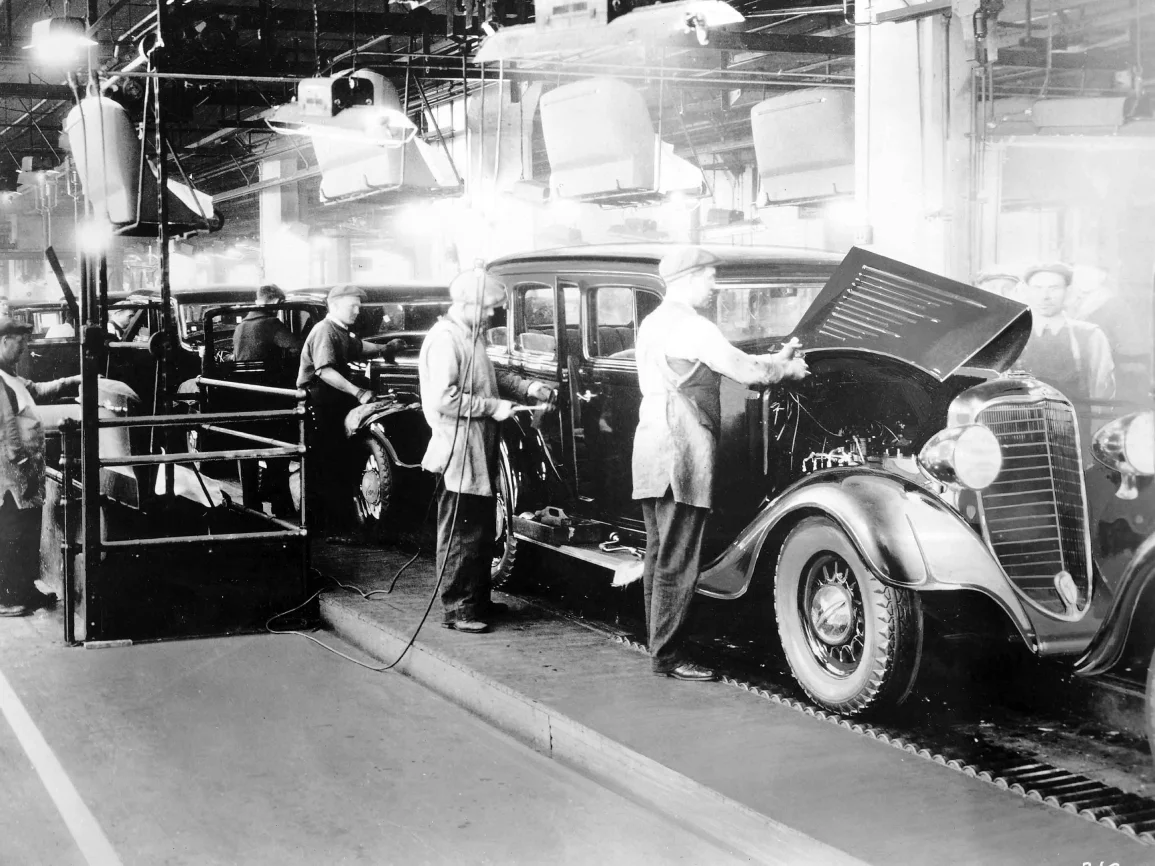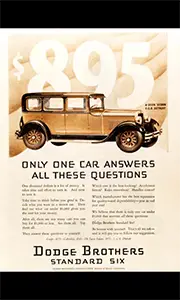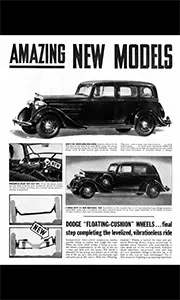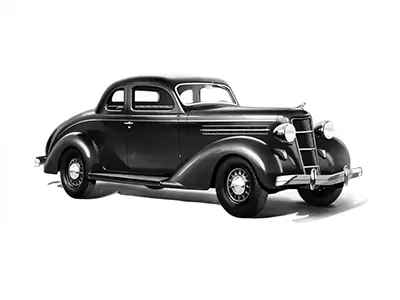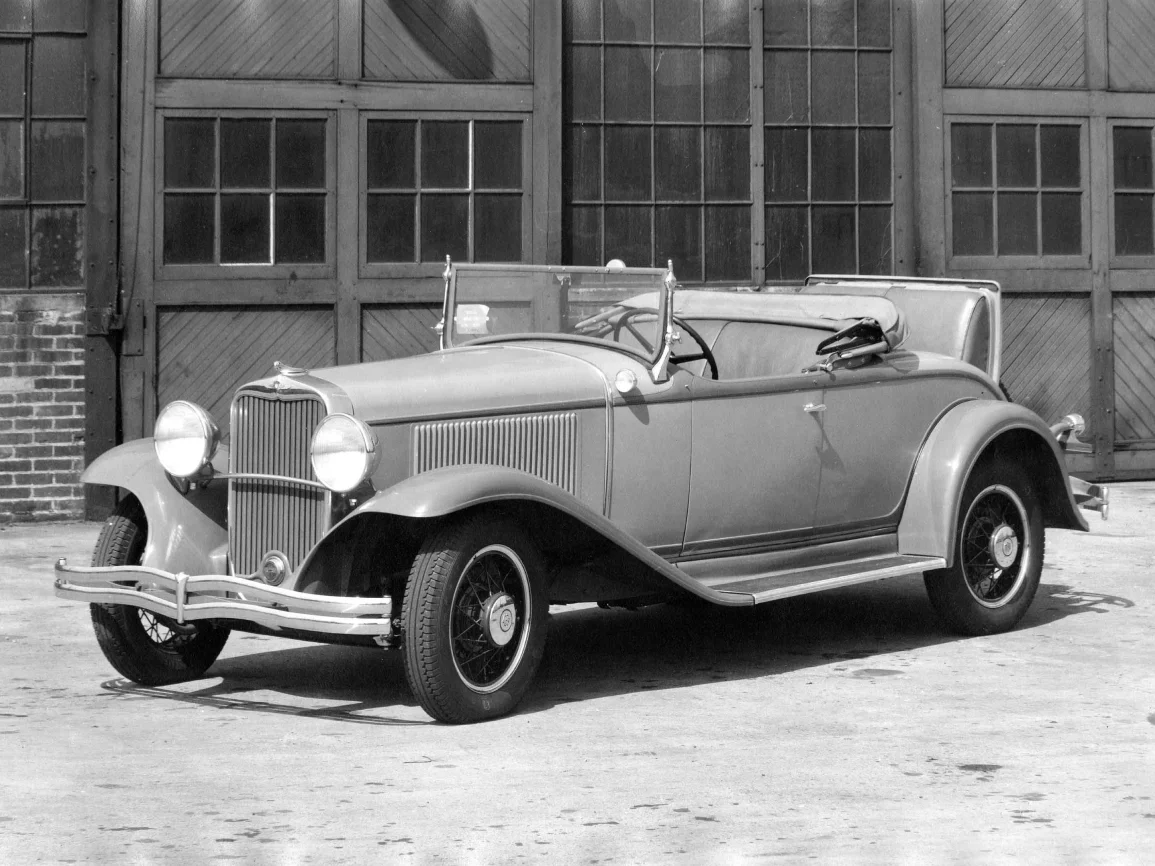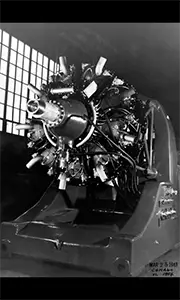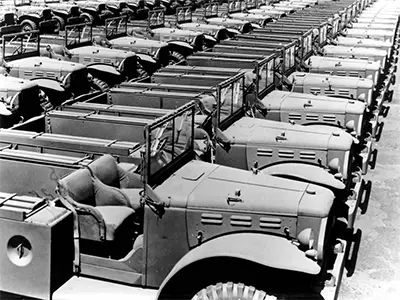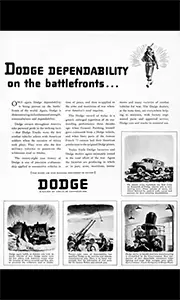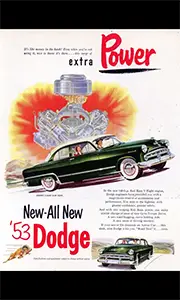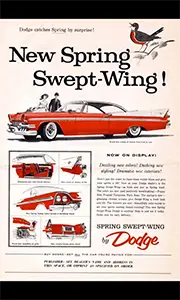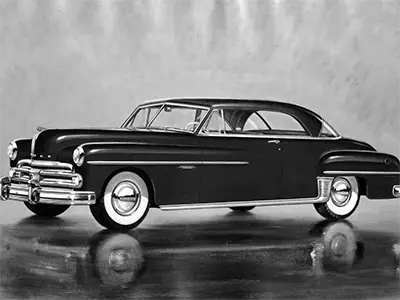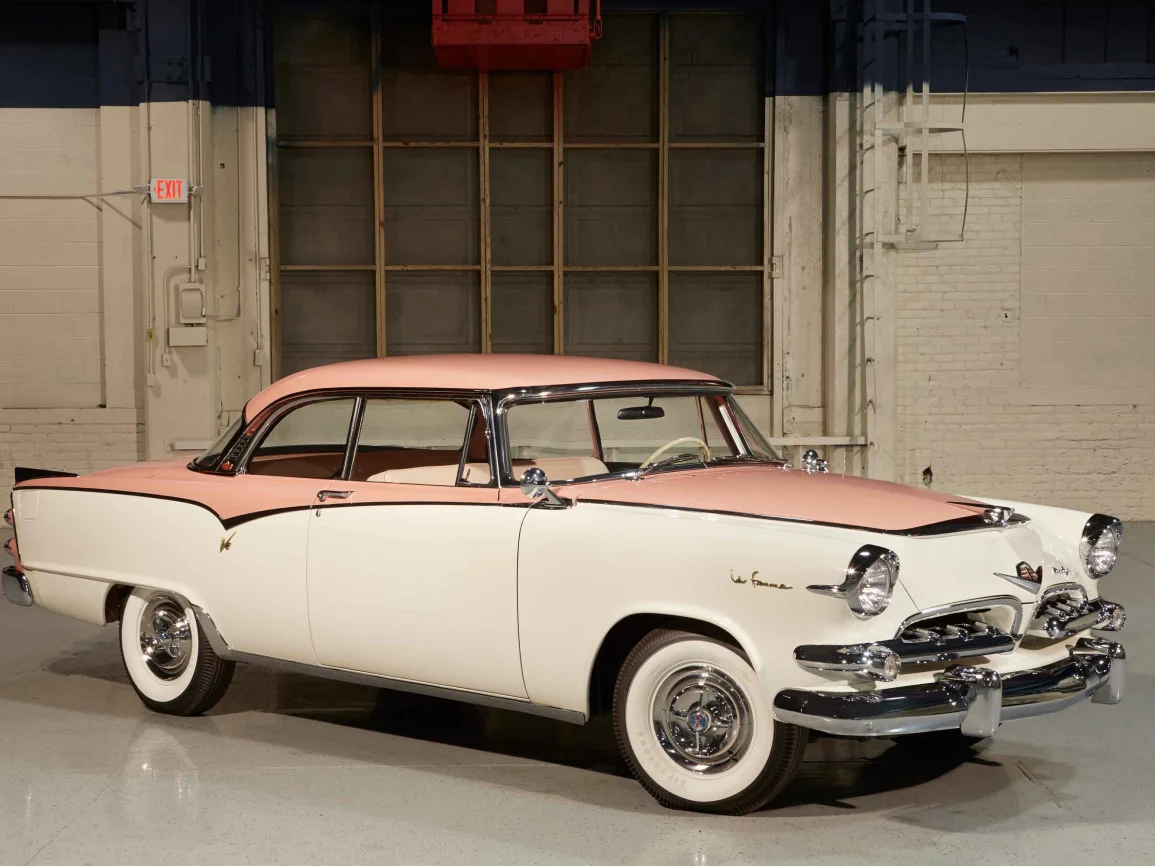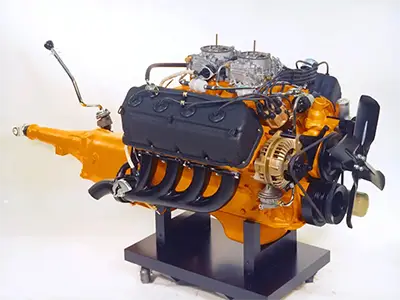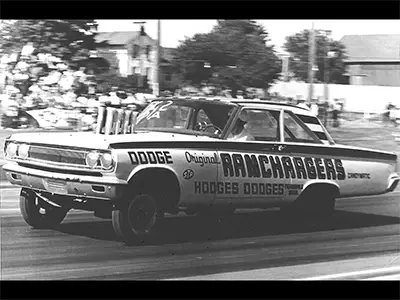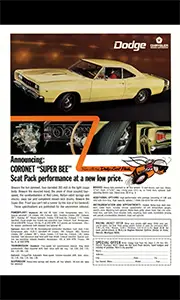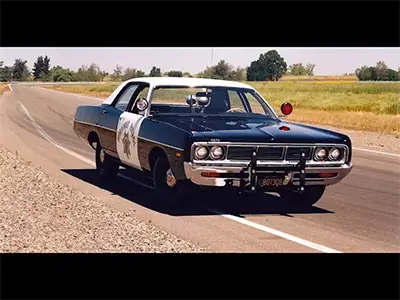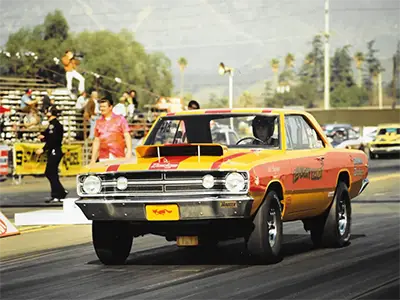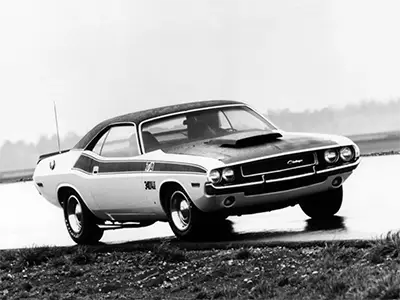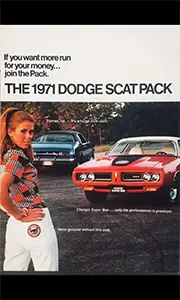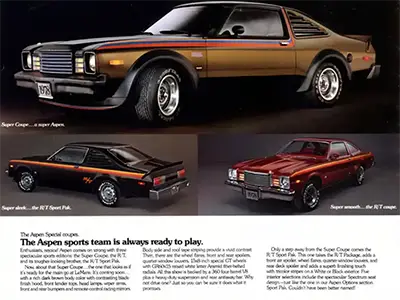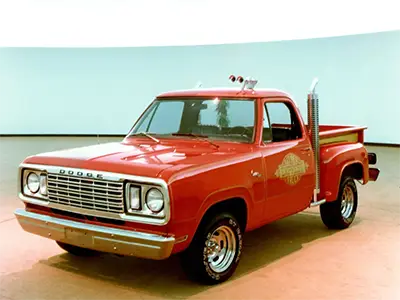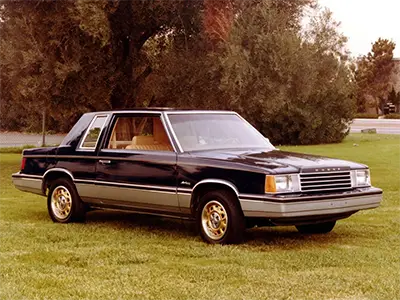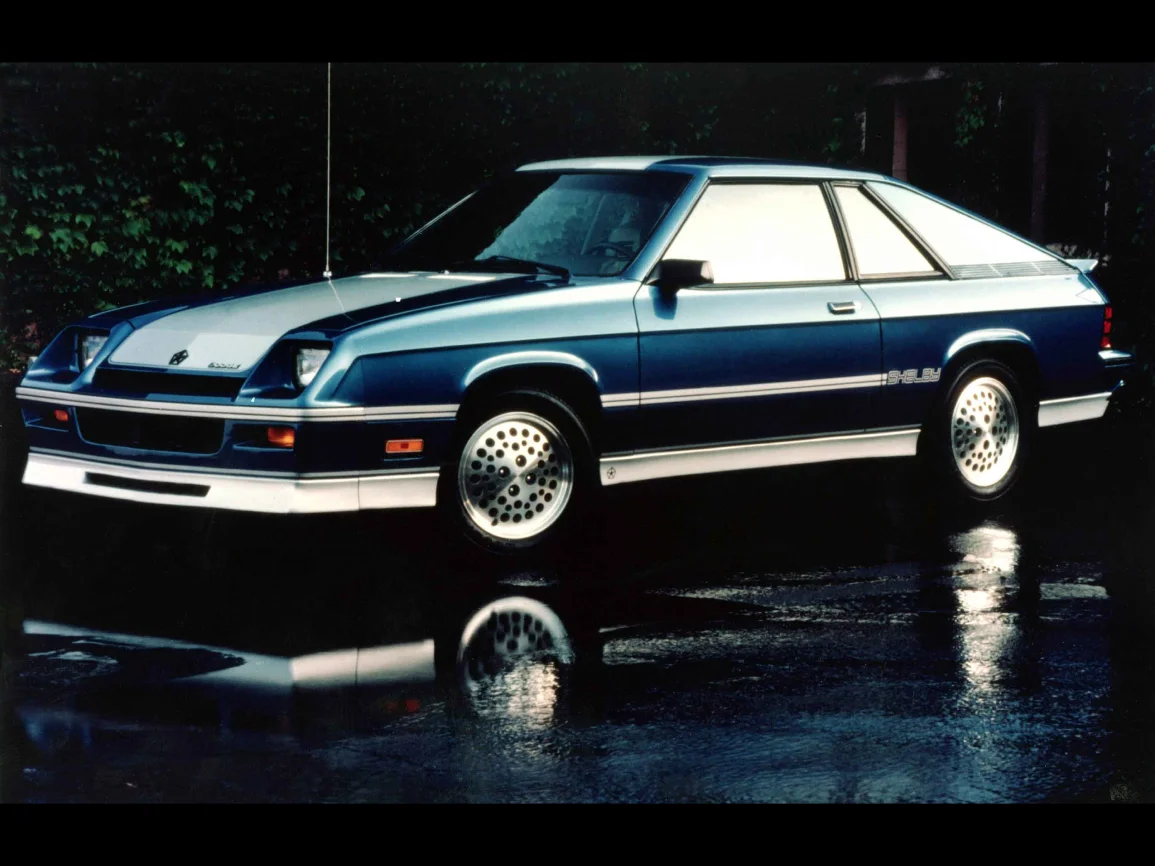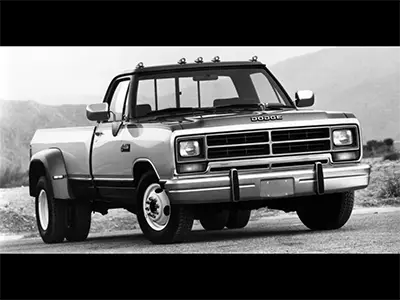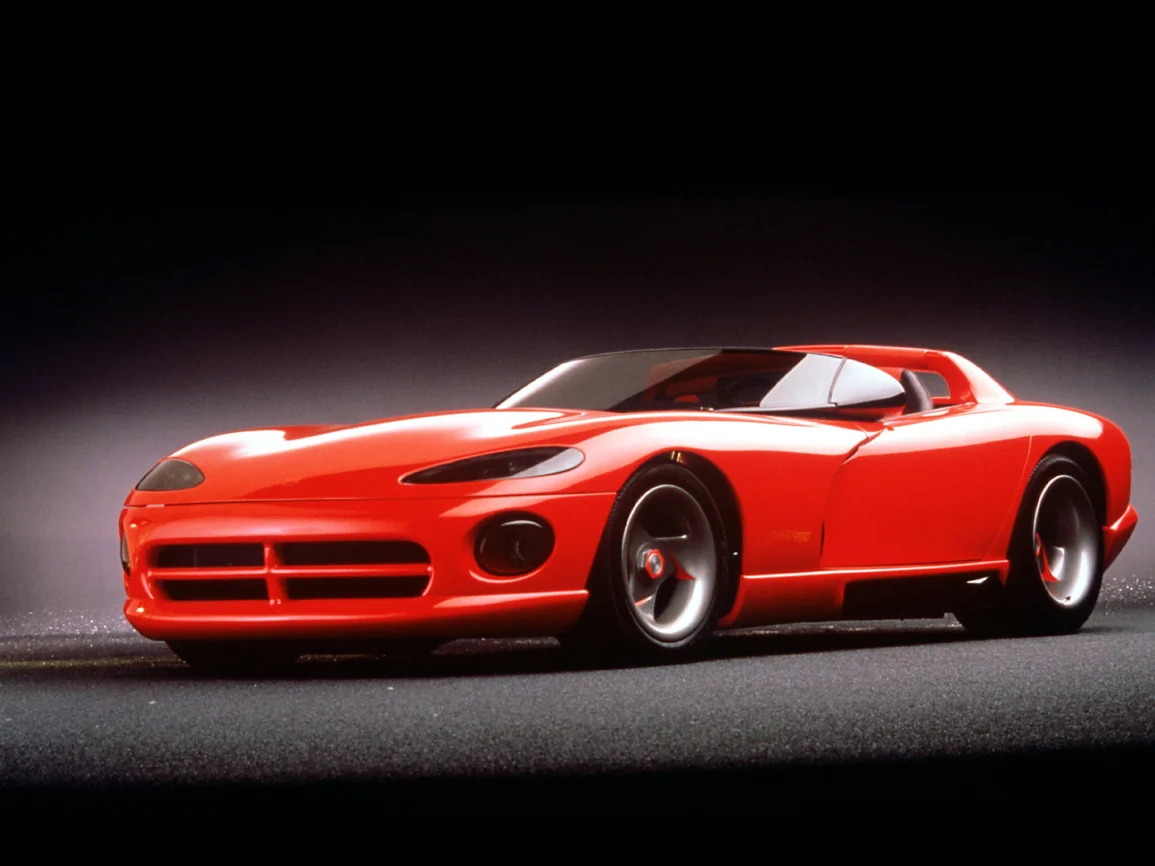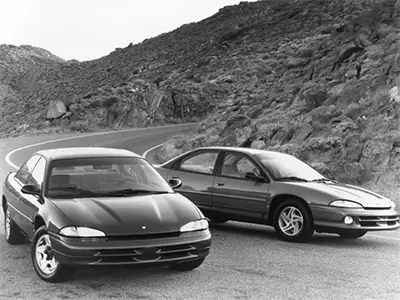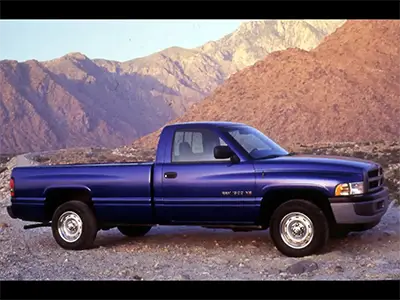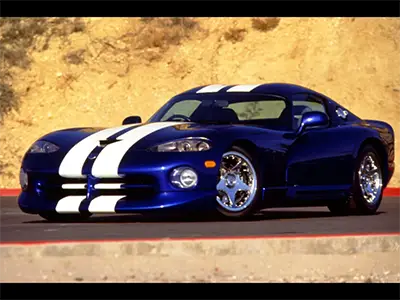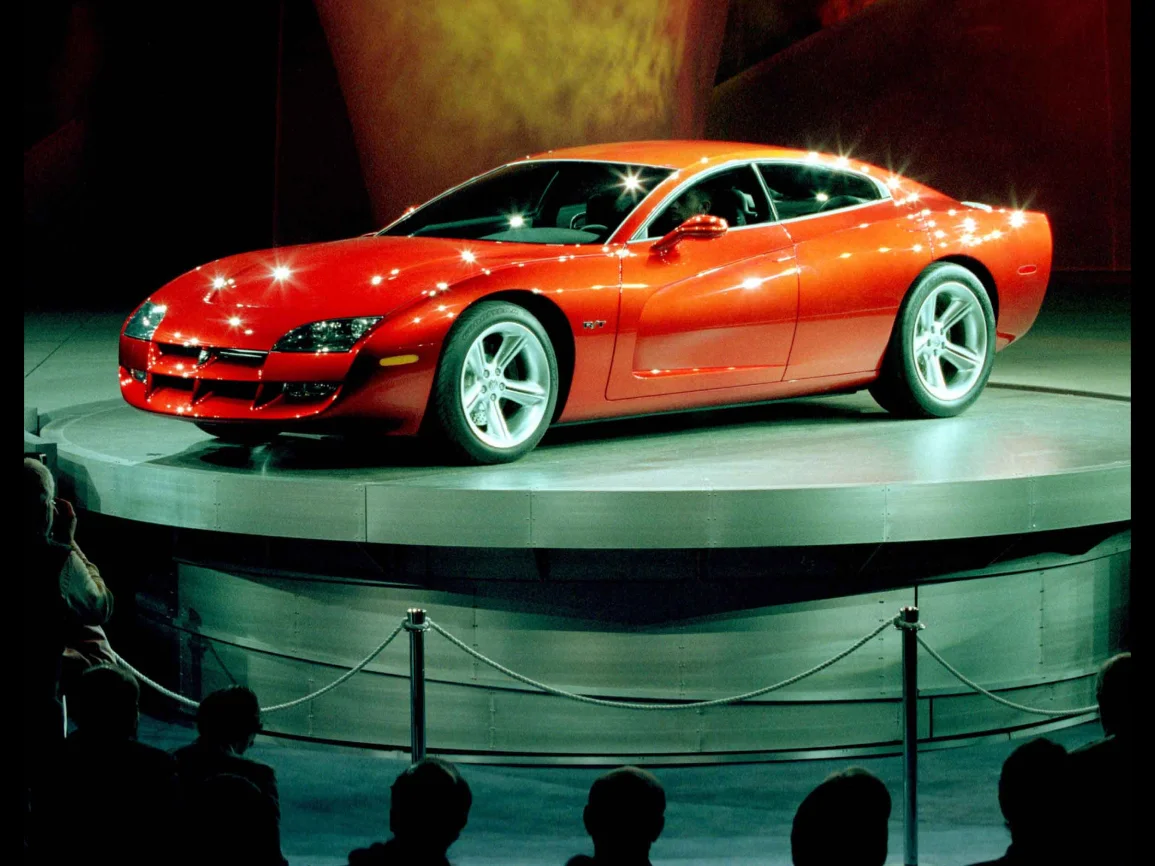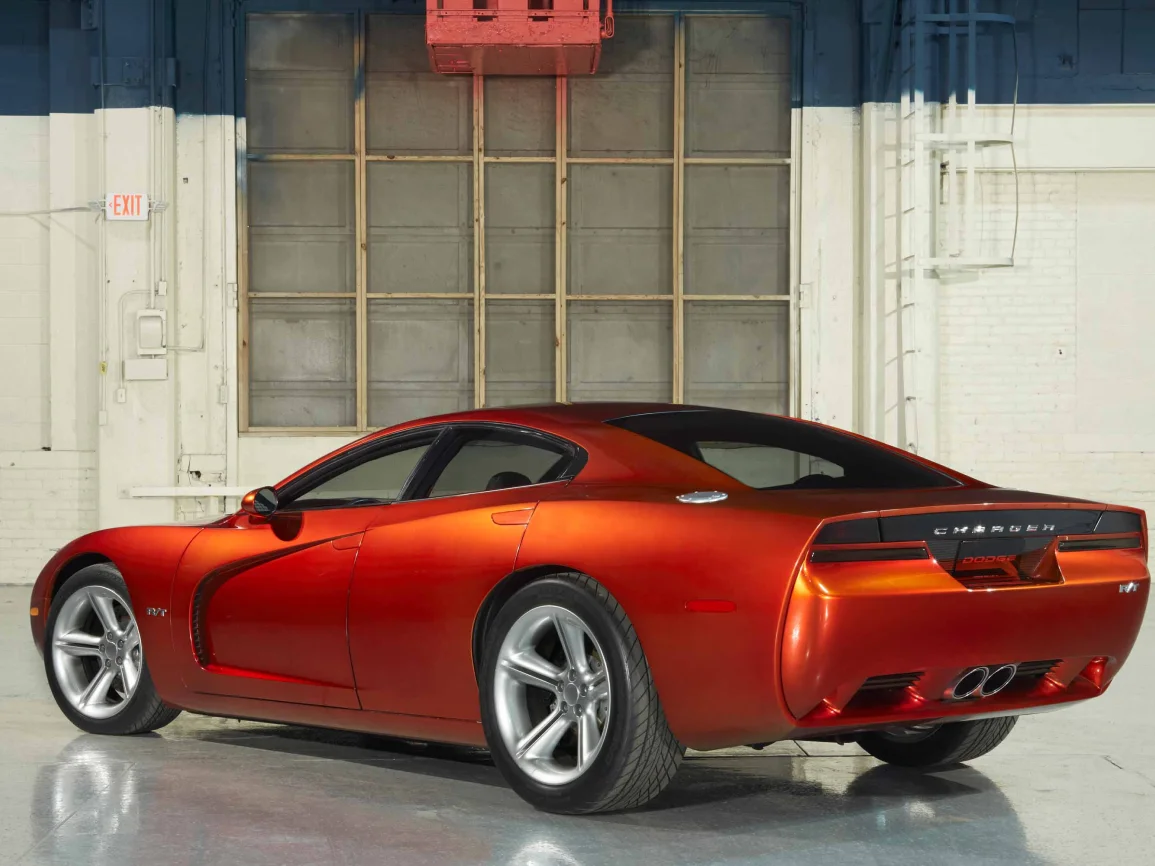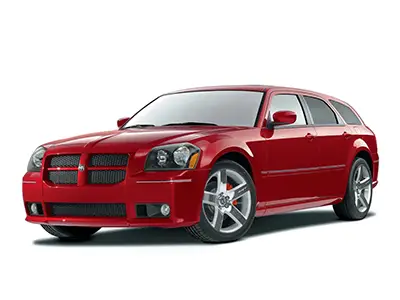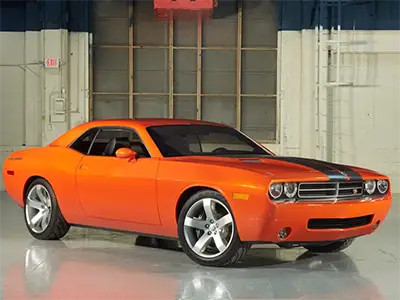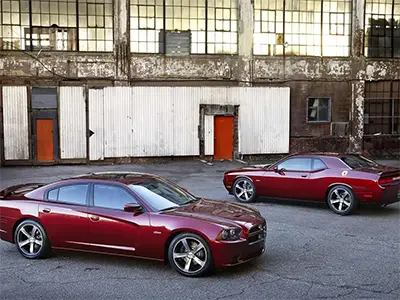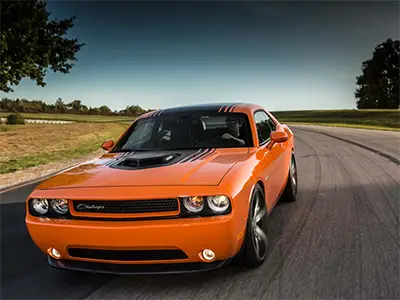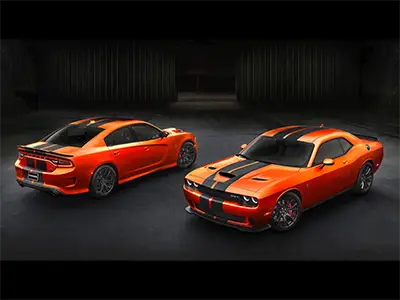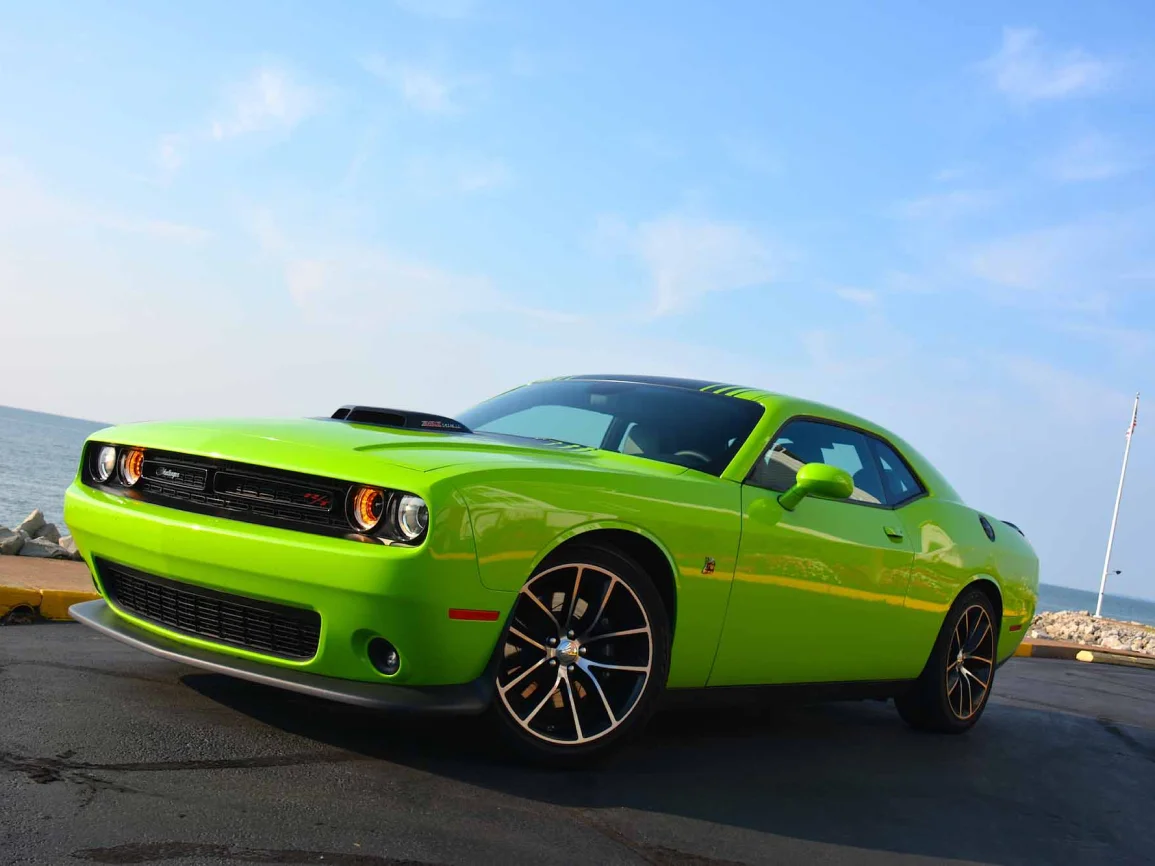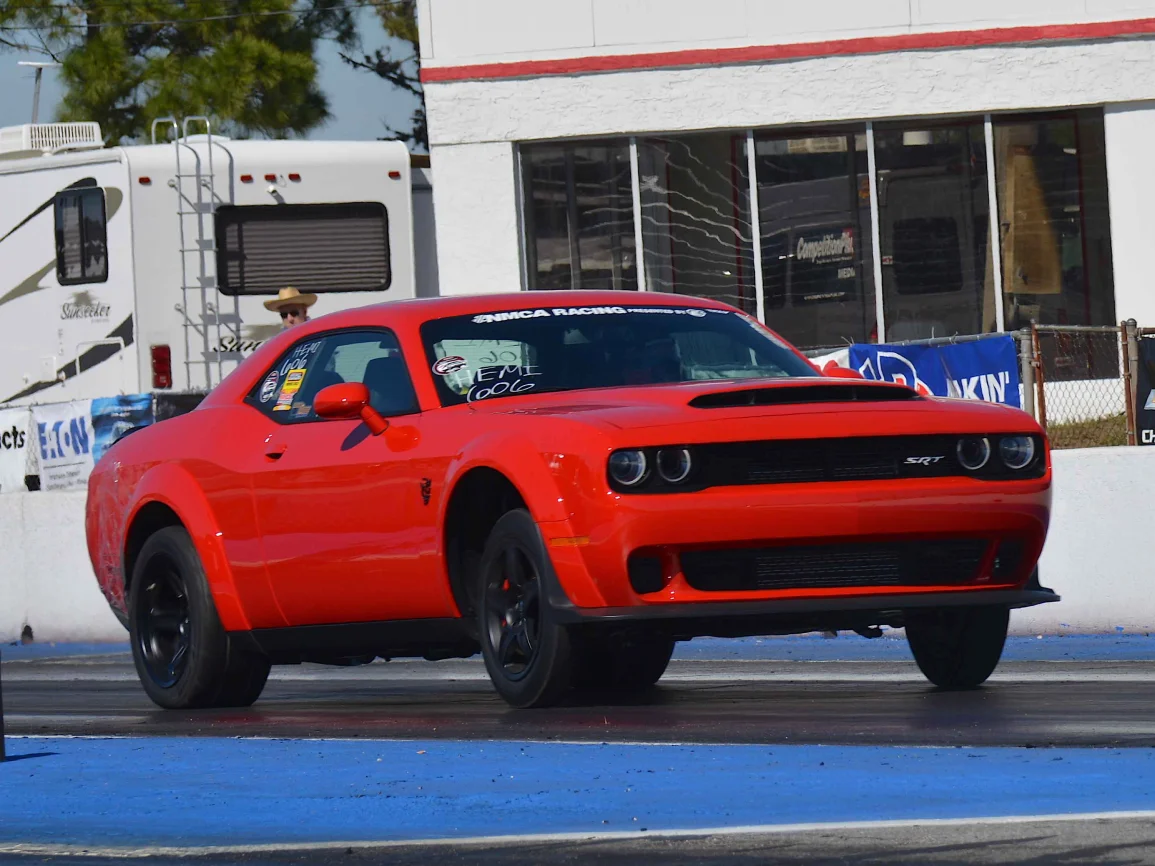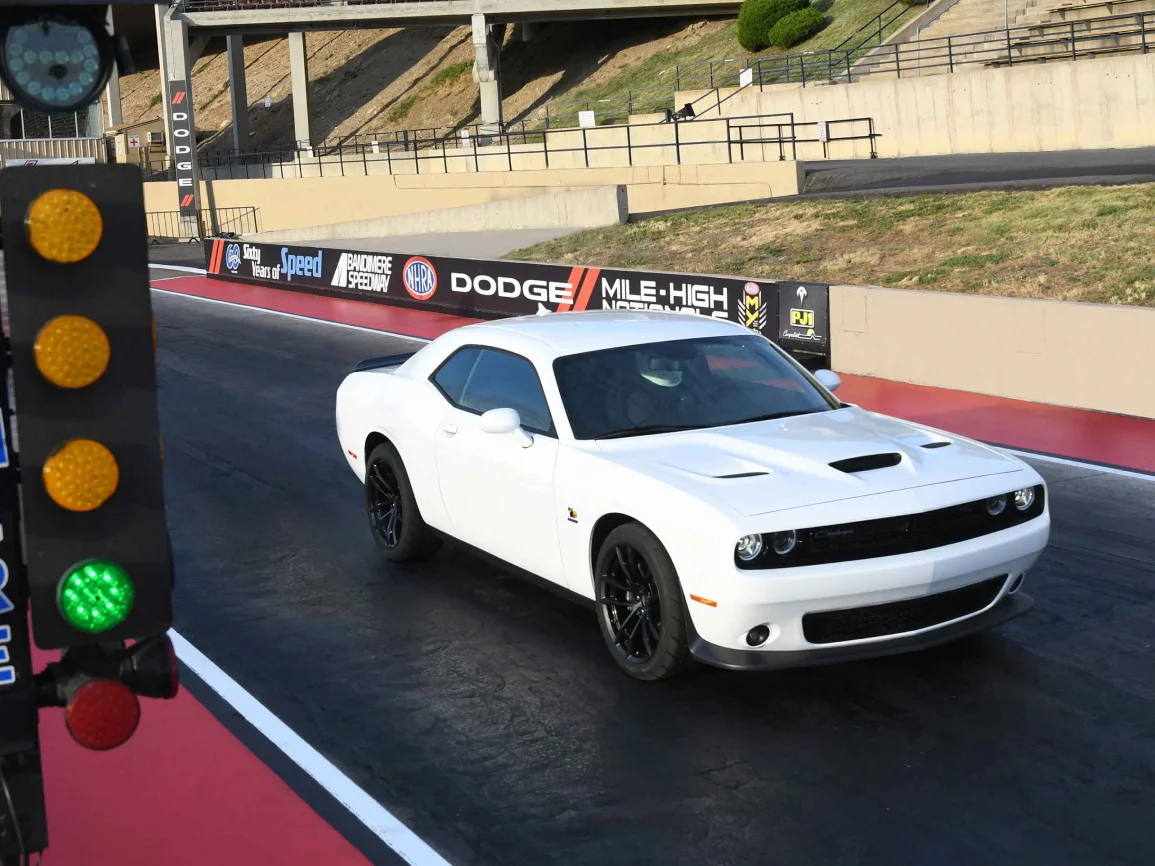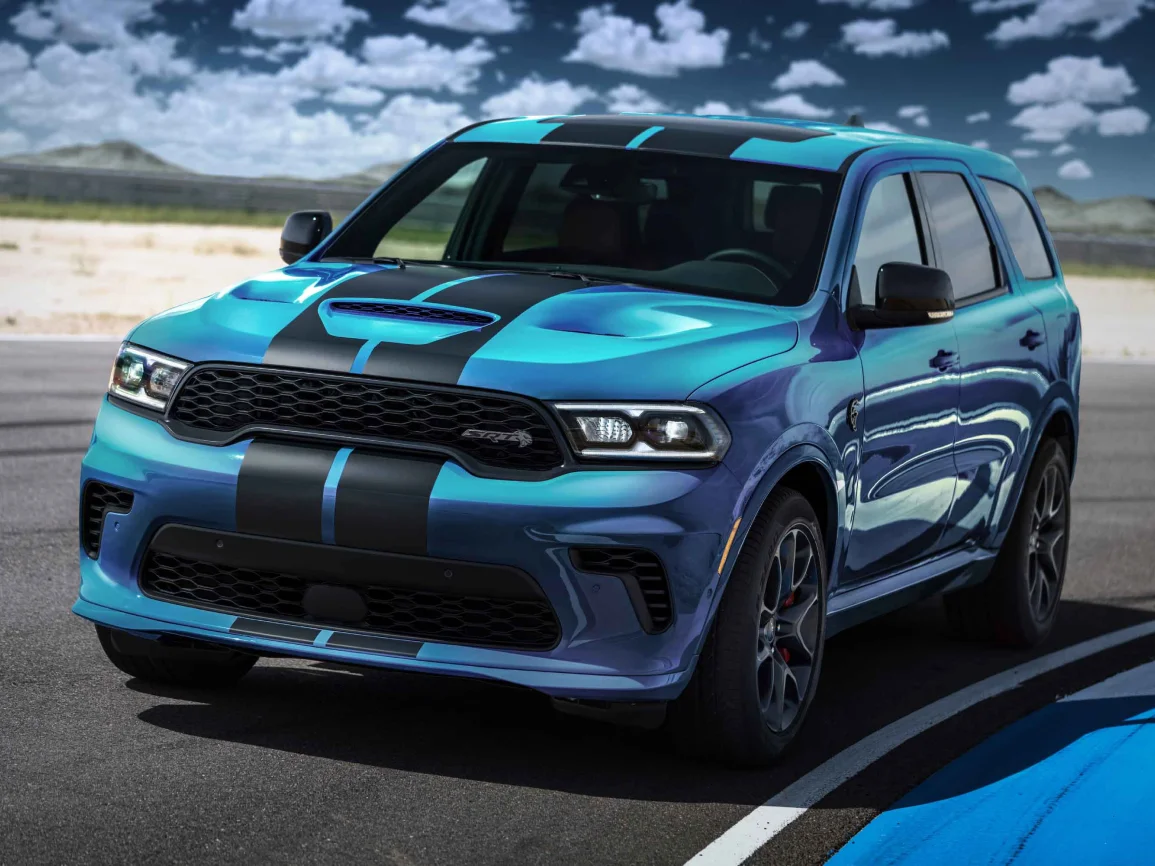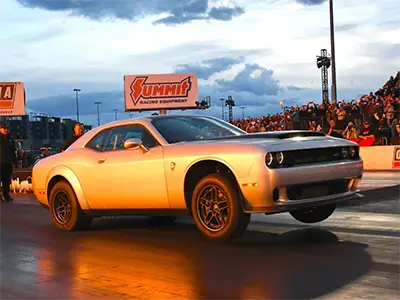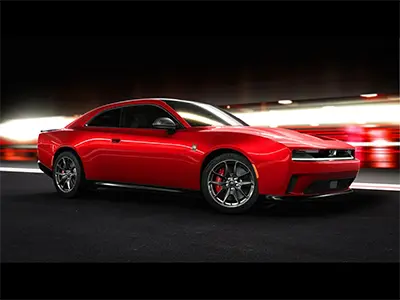Power Through Time
Every milestone, breakthrough and tire-shredding excitement — it's all here. This isn't just history; it's a high-octane journey through more than a century of Dodge power, innovation, and attitude.
Whether it's muscle cars that rule the streets, track-dominating beasts or industry-first innovations, every click takes you deeper into the story of speed, strength, and pure adrenaline. Go ahead—dive in, relive the moments, and see why Dodge has never followed the rules…and never will.
1910 — 1920
In 1914, the brothers part ways with Ford and open their own car company and a sprawling plant in Hamtramck, MI to produce their own Dodge cars. In all, 249 Dodge vehicles will roll off the line that year.
By 1915, Dodge will rank 3rd among America’s best-selling automakers for dependability and become a manufacturing partner for WWI war efforts. In addition to their commercial and civilian vehicles, they’ll begin making military trucks, cannon recuperators and even a gun recoil system for the Allied armies. By 1919, Dodge will build its 400,000th vehicle, including the company’s first four-door sedan.
1920 — 1930
In 1920, both Horace and John Dodge die after contracting pneumonia during the influenza pandemic. Despite the catastrophic loss of their founders, the Dodge company’s touring car becomes the third best-selling car in the U.S. by 1921. The company’s success continues with a historic closed car (1923), featuring technologically advanced all-steel construction and the introduction of its Roadster (1924) that features nickel-plated radiator shells and 20-inch steel wheels.
In 1925, Dillon, Read and Company purchase the Dodge Brothers properties and in 1926, the new company buys Graham Brothers, expanding the company’s offerings to trucks powered by Dodge engines. Walter P. Chrysler purchases the whole company in 1928 and Dodge produces 200,000 vehicles in that calendar year.
1930 — 1940
The Great Depression hits the U.S. hard, but Dodge continues to innovate and hold its position as the 7th best-selling car company in the nation. They produce their first 8-cylinder engine and its first factory car radio in 1931. By 1934, Dodge styles and designs help the company thrive.
In 1935, Dodge General Sales Manager Abram VanderZee utilizes the airwaves of the CBS Radio Network to motivate the Dodge salesforce. Unique, out-of-the-box thinking continues with the Dodge “Beauty Winner” ad campaign that launches in 1936, and the opening of a new plant in Warren, MI, dedicated solely to trucks, in 1938. All in time to celebrate the company’s 25th Anniversary in 1939.
1940 — 1950
By 1940, Dodge vehicles become renowned for their refined styling and engineering advancements like electric windshield wipers and turn signals available on 1941 models. In 1942, Dodge begins to concentrate on America’s WWII efforts, producing a ½-ton ambulance, half a million 4x4 military trucks and, by 1943, B-29 aircraft engines in its Chicago plant.
1950 — 1960
From 1951 to 1952, Dodge becomes the 6th best-selling car company in the US thanks, in part, to new exterior and interior features, not to mention innovations under the hood like their new Gyro-Matic transmission (1952) and a new V8 engine that uses HEMI®-type cylinder heads (1953). The latter will become a favorite of professional drag racers. 1953 also marks the first time a Dodge vehicle enters a NASCAR race and Lee Petty earns the first NASCAR victory for Dodge in Palm Springs that year.
To appeal beyond the race community, Dodge also launches The Diplomat, its first hardtop coupe, that same year. In 1955, Dodge’s dedication to muscle and speed is evident in their HEMI V8 engine, which increases to 270 cubic inches and produces 175 horsepower. Not to mention a totally new line of swept wing design called “The Forward Look” introduced in 1957 and an optional fuel injection system on its 361-cubic-inch Wedge engines in 1958. Fun Fact: Specifically marketed to women, the pink-and-white Dodge La Femme coupe included makeup, umbrella, and a rain hat.
1960 — 1970
Dodge innovates for racing with the introduction of the 413 Max Wedge engine in 1962, their 426 Max Wedge-powered Dodge 330 two-door sedans in 1963, and its 426 Race HEMI Super Stock “Package Car” in 1964. All of which will dominate both the street and strip all decade long. They’ll introduce the brand’s first compact car (Dodge Dart) in 1963, but will also continue producing race-ready vehicles that will define the muscle era, including a 365-horsepower Custom Sport Special truck (1964).
The all-new Dodge Charger appears in 1966, followed by Dodge Coronet R/T with a standard 440 Magnum V8 (1967), the first Dodge Scat Pack vehicles (1968), Dodge Super Bee (1968), a Super Stock HEMI engine-driven Dart (1968) and the Dodge Charger Daytona (1969), which will dominate Super Speedways and set land speed records. Charger will be featured in the hit Steve McQueen movie Bullitt in 1968, perhaps inspiring the production of the Dodge Polara Police Pursuit vehicle that comes with a 375-horsepower 440 Magnum V8 and a top speed of 140 mph in 1969.
1970 — 1980
In the decade of muscle decadence, Dodge Challenger arrives in 1970, then is chosen to pace the Indy 500, and have a starring product placement role in the cult classic movie Vanishing Point the following year. 1971 also saw the introduction of the Dodge Demon nameplate, as well as Challenger and Charger Rallye models in 1972. By 1973, Charger sets a new sales record among buyers thanks, in part, to new emphasis on personal luxury with the newly restyled model.
In 1976, Dodge Aspen won MotorTrend magazine’s “Car of the Year.” Then, in 1978, the Dodge Little Express Truck, with its high-performance 360-cubic-inch V8 is introduced as the fastest production vehicle of the year. That same year, Dodge introduces the world to Dodge Omni, an all-American-built sub-compact for an era of tightening emissions that would ring in a new era for the brand.
1980 — 1990
In 1981, Lee Iococca stars in new Chrysler commercials introducing the world to the Dodge Aries K-Car series. In 1983, Dodge and Shelby collaborate to create the new Shelby Charger. By 1984, the real revolution begins with the introduction of Dodge Caravan minivan. A vehicle that will be a mainstay in the lineup for decades to come.
1985 sees the development of the Dodge Ram Cummins Diesel Prototype and its 12-valve, rotary-pumped, inline-six diesel engine. Three years later (in 1988), Dodge celebrates 75 years and Dodge Dynasty becomes the company’s best-seller. The North American International Auto Show in Detroit is stunned in 1989 when Dodge debuts Dodge Viper.
1990 — 2000
Around 1993, “Cab Forward” styling becomes the revolutionary design of vehicles under the Dodge nameplate, like the new Dodge Intrepid, that showcases the new thinking and unique exterior cues and technical features. In 1994, the 2nd Generation Dodge Ram pickup revolutionizes the truck world with its innovative features.
In 1996, just as the final Dodge-Mitsubishi Stealth is phased out of production, the 2nd Generation Dodge Viper and the all-new Viper GTS coupe capture the attention of the automotive public in a big way. 1999 sees the introduction of a new Charger R/T concept car and a Power Wagon concept truck that will tease auto show audiences across the country.
2000 — 2010
The new millennium will witness the introduction of the all-new Dodge Neon, Dodge Stratus and, in 2002, the newly redesigned Dodge Ram 1500. Then, in 2003, concept vehicles like Dodge Magnum (a station wagon with a HEMI engine), Dodge Kahuna, Dodge Avenger, Dodge Tomahawk motorcycle, not to mention Dodge Viper with a V10 captivate audiences across the globe.
In 2005, the first Magnum hits the streets. Meanwhile, the entry-level, “anything but cute” Dodge Caliber concept is unveiled. The public’s hunger for more power is back in 2006, as the iconic Charger nameplate with a HEMI engine rolls off the line as Dodge teases a stunning Challenger concept to a very positive public approval rating. Challenger will become a reality in 2008. In 2009, Dodge and Ram become separate divisions, allowing both to focus on their own unique customer needs.
2010 — 2020
In 2011, Dodge introduces six refreshed or completely redesigned vehicles in the all-new Durango, Charger, Challenger, Avenger, Grand Caravan and Journey. Three years later, in 2014, the company celebrated its 100th Anniversary at Meadow Brook Hall in Rochester, MI, by introducing Special Edition Challenger and Charger R/T models. 2014 would also welcome Challenger R/T Shaker edition and Challenger SRT8 392, a vehicle featuring the 475-horsepower 392 HEMI V8, one of the most powerful engines to date.
Dodge ups the ante again in 2015 with their 707-horsepower Challenger and Charger SRT® Hellcat models. Along with Challenger and Charger Scat Pack models that come with a standard 485-horsepower 392 HEMI V8 engine. In 2019, Dodge introduces Challenger 1320 as the “quickest domestic naturally aspirated performance car on the market.” In the 50th year since its original debut, Challenger is celebrated with a 50th Anniversary Commemorative Edition. 2018 Dodge Challenger SRT Demon shakes up the performance car market with frighting performance that includes nine-second quarter mile times in stock form. 2019 also sees the release of Charger Widebody in both SRT Hellcat and Scat Pack trim levels.
2020 — 2023
In 2021, the 710-horsepower Dodge Durango SRT Hellcat is introduced, taking on the high-end European offerings in the category, and taking the performance SUV to the next level. Then, in 2023, to celebrate Dodge’s Last-Call Challenger, the 1,025-horsepower Challenger SRT Demon 170 is uncaged in Las Vegas, NV, creating jealousy among competition and inducing whiplash in power-hungry onlookers.
2023 — 2024
The 2023 Dodge Hornet GT arrived at the beginning of 2023, and the 2024 Dodge Hornet R/T performance hybrid arrived summer 2023. The Dodge Hornet is a compact utility vehicle (CUV) that merges iconic American muscle with modern technology. It is known for its aggressive looks, impressive performance and a driver-centric, dynamic driving experience.
In late 2024, Dodge released their first electric muscle car, the Dodge Charger Daytona. The Next-Gen Dodge Charger builds on Dodge’s infamous legacy by bringing muscle car performance to the modern age. The 2-door 496 horsepower R/T and 670 horsepower Scat Pack trims lead the way for the soon-to-come 4-door and SIXPACK variants.
